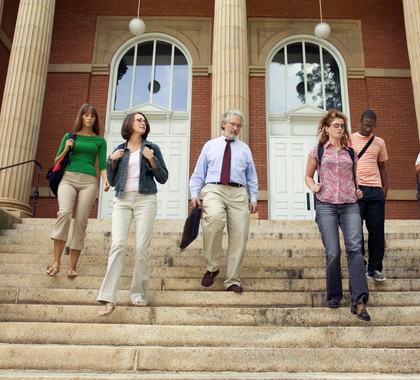EdChoice has released an updated version of its Fiscal Effects of School Choice analysis, bringing up to date the latest data and demonstrating the large savings education choice programs have provided taxpayers.
The analysis looked at 48 separate programs (22 school voucher programs, 21 tax-credit scholarship programs, and five education savings account programs) in 25 different states, as well as the District of Columbia, with at least three years of available data, and found these programs have generated $19.4 to $45.6 billion in net fiscal savings to state and local taxpayers through Fiscal Year 2022. This works out to $3,300 to $7,800 in savings per each participating student.
“For every dollar invested in choice programs,” the report notes, “taxpayers received fiscal benefits ranging from $1.70 to $2.64. All programs in the study have operated for at least five years, suggesting that the actual fiscal effects are closer to the long-run estimates, generating net fiscal benefits for state and local taxpayers combined. Savings are likely closer to the long-run estimates because districts encounter increasing opportunities to refine their operations and budgets over time.”
The report also finds if 57 percent of the students participating in choice programs are “switchers” from public to private schools, the programs save taxpayer dollars overall. However, for programs that have been in existence for a long time, this rate might be as low as 36 percent.
“It is hard to argue that expanding educational opportunities through education choice programs would financially harm public school systems,” the report concludes. “Numerous studies have explored the impact of education choice programs on students in nearby public schools. Almost all report that students who stay in district schools see modest and positive improvements in their learning. This evidence contradicts the claims that students in district schools suffer when education choice expands, suggesting instead that the opposite is true, as students who remain in district public schools experience modest academic gains and even more resources devoted to their education via fiscal savings from choice programs.”
Copious empirical research on school choice programs such as ESAs makes clear these programs offer families improved access to high-quality schools that meet their children’s unique needs and circumstances, and that these programs improve academic performance and attainment while delivering a quality education at lower cost than traditional public schools.
Additionally, education choice benefits public school students and taxpayers by increasing competition, decreasing segregation, and improving civic values and practices. Research also shows students at private schools are less likely than their public school peers to experience problems such as alcohol abuse, bullying, drug use, fighting, gang activity, racial tension, theft, vandalism, and weapon-based threats. There is also a strong causal link suggesting private school choice programs improve the mental health of participating students.
Unfortunately, only about 40 percent of students nationwide have access to an education choice program. Legislators should be looking for ways to get all families into the schools that they think best fit the unique needs of their children. States with education choice programs should seek to make these programs universal as quickly as possible. States without an education choice program should look to enact one of modest size, open to low-income families or children with special needs or those zoned to chronically underperforming schools, with the goal of incrementally expanding these programs in the years to come.
The goal of public education today and in the years to come should be to allow all parents to choose which schools their children attend, require every school to compete for every student who walks through its doors, and make sure every child has the opportunity to attend a quality school that best fits their unique needs and circumstances. There has not been a time when providing these opportunities has been more urgent and needed than right now.
Heartland Impact can send an expert to your state to testify or brief your caucus; host an event in your state; or send you further information on a topic. Please don’t hesitate to contact us if we can be of assistance! If you have any questions or comments, contact Cameron Sholty, at csholty@heartlandimpact.org or 312/377-4000.


